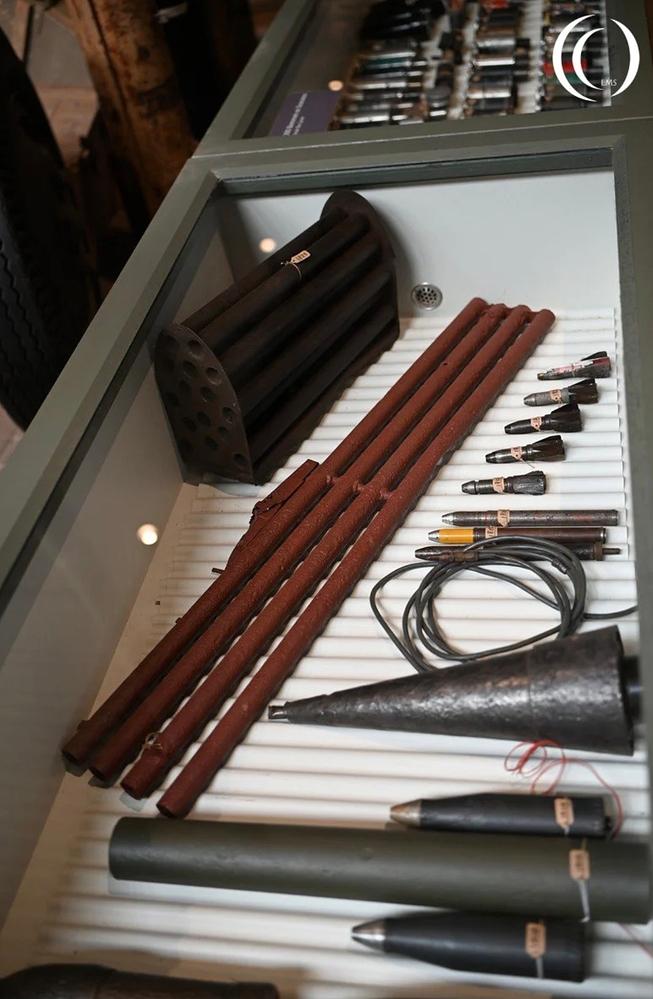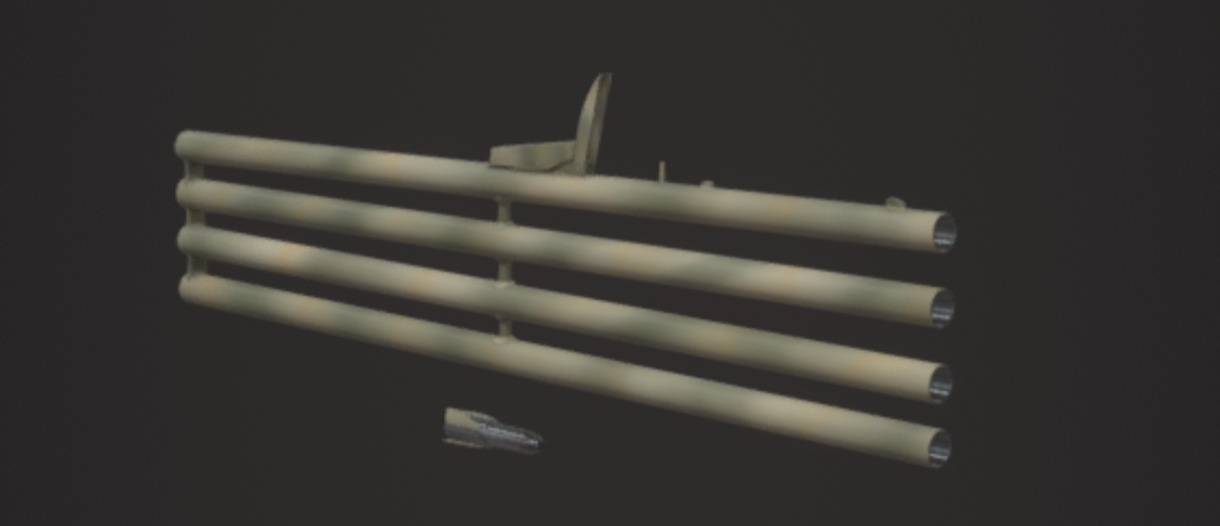HISTORY
At the end of World War II, German forces faced a serious problem — Allied aviation was increasingly dominating the skies. German infantry was left practically defenseless against low-flying fighters and ground-attack aircraft. To address this issue, in 1944, the development of individual anti-aircraft weapons for soldiers began — this led to the creation of the Luftfaust (translated from German as “air fist”).
The first prototype was the Luftfaust A model, developed at the HASAG (Hugo Schneider AG) plant. It was a multi-barreled weapon that fired unguided 20mm rockets. It had four barrels, which simultaneously launched rockets toward the target. Aiming was manual — the soldier simply tried to predict the aircraft’s trajectory and fired with a lead.
However, tests showed that the Luftfaust A was extremely ineffective. Its short range (only about 300 meters), weak warhead, and low accuracy made it difficult to successfully hit targets. Additionally, the small caliber did not provide sufficient damage even with a direct hit.
As a result, further efforts were focused on an improved version — the Luftfaust B, which had nine barrels and a slightly longer range. The Luftfaust A remained purely experimental. It was never adopted into service and never saw combat. The project was shut down with the end of the war, and the Luftfaust itself remained an interesting but unsuccessful step in the evolution of MANPADS.
According to historians, the Luftfaust A remained at the prototype stage, with only a few units ever produced — estimates range from 1 to 6 pieces.
SPECIFICATIONS (TECHNICAL DATA)
Effective range: 350 meters
Rocket muzzle velocity: 250 m/s
Weapon body (barrel block) length: 1000 mm
Weapon body (barrel block) height: 300 mm
Barrel diameter: 30 mm
Barrel caliber: 26 mm
Barrel wall thickness: 2 mm
Weight: Unknown, but approximately 6–8 kg
Rate of fire: 4–6 shots per minute
INTERESTING FACTS
-
One of the first MANPADS in history
The Luftfaust A is considered one of the earliest predecessors of modern man-portable air-defense systems — long before the likes of the “Stinger” or “Igla”. -
Improvisation against aircraft
The weapon was developed to give infantry at least some means of defense against aircraft, since traditional anti-aircraft guns were too bulky and immobile. -
Experimental rockets
It used special 20mm rockets with solid-fuel propulsion. These were highly unstable and had poor flight trajectories. -
A salvo like a flamethrower
Firing all four barrels at once created a loud blast and a large smoke cloud — making the operator highly visible and vulnerable. -
Never saw combat
The Luftfaust A was never used in actual combat. All known units remained in testing and development stages. -
Transition to Luftfaust B
It quickly became clear after testing that the Luftfaust A was too weak — it was soon replaced by a more powerful version with nine barrels.
The Luftfaust A could be added to the game at BR 1.0–2.0, perhaps as part of an event or a battle pass.
Thank you for your attention!

